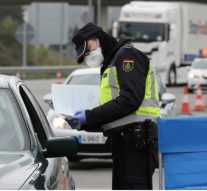
Migration crisis prolongs in wake of a never-ending covid-19 pandemic
Migration 22 February 2021A never ending COVID-19 crisis still rolls within the EU territories as well as within the whole European continent. A constant maltreatment and problems within the migrant routes, combined with the COVID-19 crisis, have established extreme challenge for the EU institutions. What are the consequences of the COVID-19 pandemics towards the migrant crisis? This article presents a review of what the EU Commission and its institutions predict as the potential problems.
The European Commission believes that the COVID-19 epidemic revealed that migrant workers are playing a critical role in performing basic functions in EU societies. On average, 13% of workers in occupations that have been identified as essential in the response to the COVID-19 pandemic in the EU (i.e. key workers) are immigrants. This includes both EU mobile workers and workers from non-EU countries. In some occupations such as cleaners and helpers and labourers in mining and construction, up to a third of key workers are foreign-born.
Although highly-educated migrant workers are generally favoured by immigration policies and citizens in host countries, low-educated migrants are strongly represented in occupations that are key for hosting societies (e.g. personal care workers in health service, drivers, transport and storage workers, food processing workers). Yet, available evidence suggests that migrants are among the vulnerable groups that are paying the heaviest toll of the crisis.
For example, undocumented migrants, remain largely beyond the scope of contributory income-support schemes. The risk of displacement due to conflict will probably increase even though options for travel are likely to be restricted. Conflicts that have in the past forced many people from their homes, have not universally been pacified during the pandemic. The interrelated effects of the pandemic – such as contracting economies, food insecurity, social unrest, political tensions, hardening societies and deepening divisions between population groups – could result in massive displacements and possibly onward movement towards Europe, including many persons with international protection needs.
At the same time, migration patterns will likely remain highly disrupted due to restrictions on mobility and possibly coupled with increased digital surveillance. Consequently, refugees’ ability to access to protection whether in Europe or elsewhere may be compromised. A World Bank brief estimates that due to the COVID-related global economic contraction expected in 2020, remittance flows to low and middle-income countries are likely to drop by around 20 percent. This reduction could increase poverty and reduce households’ access to much-needed health services during the pandemic.
The migrants face with another obstacle which was created during the pandemic – the national borders` closure. While bilateral agreements may allow some country pairs to restore unrestricted travel, especially within the EU, the resumption of many other bilateral travel corridors will likely involve some border measures to ensure that incoming travellers do not constitute an excess risk of spreading the virus. Border measures are inherently costly to implement for authorities and to comply with for travellers, both in strictly monetary terms and in terms of the time lost when crossing borders. Other than for very frequent travellers (transport operators, commuters, some posted workers) for whom special arrangements have been made from early on during the pandemic, border measures for infectious disease control will probably represent a fixed cost per entry into the destination country for most travellers (i.e. the cost does not depend on the length of the stay).
While it is more difficult to ensure adequate reception conditions during the COVID-19 pandemic, serious public health risks may arise if irregular migrants and asylum seekers are left to their own devices and without access to subsistence, health care, and protection. When individuals live in cramped accommodation in unsanitary conditions, which is the case for many migrants with uncertain legal status, including in some large camps on the Greek islands, there is a high risk of infectious disease spreading rapidly among, and beyond the migrant population.
The European Commission has made clear that it expects member states to safeguard the right to asylum even during the pandemic. Hence, border closures and the suspension of asylum applications may be temporary. However, it is not clear when the pandemic will subside. Before they re-open their external borders, EU member states will want to ensure that their capacities for receiving and hosting irregular migrants and processing asylum applications will not be overstretched; in making that assessment, they will want to err on the side of caution.


